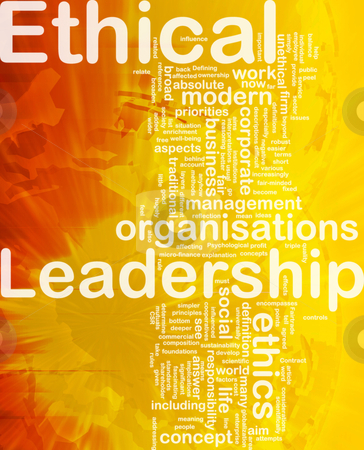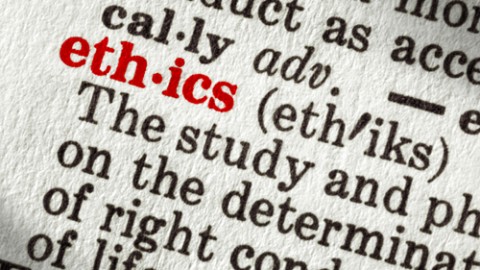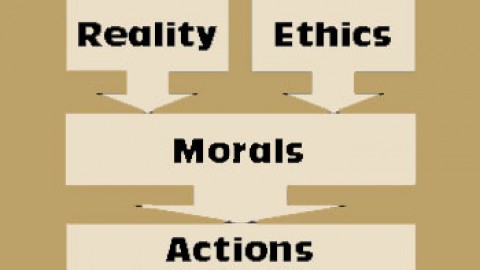Thomas R. Fox
Ethical leadership is absolutely mandatory to have a successful compliance program, whether it is based upon the US Foreign Corrupt Practices Act (FCPA) or the UK Bribery Act. Senior management must not only be committed to doing business in compliance with these laws but they must communicate these commitments down to the organization. But leadership is not limited only to senior management within an organization. Tone at the Top begets Tone in the Middle; which begets Tone at the Bottom. At each rung there is the need for compliance leadership. In an article in the June issue of the Harvard Business Review, entitled “Leadership is a Conversation”, authors Boris Groysberg and Michael Slind discuss how to improve employee engagement in today’s “flatter, more networked organizations.”

Reputational Compliance
The authors posit that the issue of how leaders handle communications within their organizations is as important as the message. They believe that the process should be more dynamic and more nuanced and is a process that they term “conversational”. Building on this concept they suggest a model of leadership which they call “organizational conversation” which resembles ordinary person-to-person conversations. They believe that this model has several advantages, including that it allows a large company to function like a small one and it can enable leaders to “retain or recapture some of the qualities…that enable start-ups to out-perform better established rivals.” The authors have found four elements of organizational conversation which “reflect the essential attributes of an interpersonal conversation.” They are: intimacy, interactivity, inclusion and intentionality.
Intimacy: Getting Close
Here the authors appear to focus on two works: listening and authenticity. Recognizing that physical proximity may not always be feasible but emotional or mental proximity is required. They advise leaders to “step down from their corporate perches and then step up to the challenge of communicating personally and transparently with their people.” This technique shifts the focus of change from a top-down hierarchical model to a “bottom-up exchange of ideas.”
Interactivity: Promoting Dialogue
Interactivity should make a conversation open and more fluid. You can obtain this by talking with and not just talking to an employee. The purpose of interactivity builds upon the first prong of intimacy. The authors believe that efforts to close the gap between employees will founder if both tools are not in place along with institutional support which gives employees the freedom and courage to speak up. The authors believe that social media can be a useful tool to help foster such interactivity, but care must be taken to ensure that managers do not simply use social media as another megaphone. The authors suggest that more than just social media is required and that something extra is needed and that is social thinking.
Inclusion: Expanding Employees Roles
Following on intimacy is inclusion as intimacy should force a leader to get closer to employees while inclusion challenges the employee to play a greater role in the communication process. Inclusion expands on interactivity by enabling employees to put forward their ideas “rather than simply parrying the ideas that others present.” Clearly this is the prong that brings employee engagement into the communication process by calling on employees to “generate the content that makes up a company story.” Employees who become committed to a message can become the best brand ambassadors that a company can ever hope to have on its payroll.
Intentionality: Pursuing an Agenda
While the first three prongs of the authors’ model focuses on opening up the flow of communication, intentionality is designed to bring a measure of closure to the process. The goal here is to have voices merge into a single vision of what the company’s communication is for. In other words, the conversation should reflect a “shared agenda that aligns with the company’s strategic objectives” that will allow employees to “derive a strategically relevant action from the push and pull of discussion and debate.” The leaders role here is to “generate consent rather than commanding assent” for a strategic objective. The authors believe that this enables employees at the top; at the middle; and at the bottom to “gain a big-picture view of where their company stands” on any issue which has gone through the process.
The Box Score of Organizational Conversation
| Intimacy | Interactivity | Inclusion | Intentionality | |
| Old Model: Corporate Communications | Information flow is primarily top down;Tone is formal and corporate | Messages are broadcast to employees;Print newsletters, memos and speeches | Top Execs create and control messaging;Employees are passive consumers of information | Communication is fragmented, reactive and ad hoc;Leaders use assertion to achieve strategic alignment |
| New Model Organizational Communications | Communication is personal and direct;Leaders value trust and authenticity | Leaders talk with employees, not to them;Organizational culture fosters back and forth, face-to-face interaction | Leaders relinquish a measure of control over content;Employees actively participate in organizational messaging | A clear agenda informs all communications;Leaders carefully explain the agenda to employees;Strategy emerges from a cross-organization conversations |
| What it means for employers and employees | Leaders emphasize listening to employees, rather than just speaking to them;Employees engage in a bottom-up exchange of ideas | Leaders use video and social media tools to facilitate two-way communication;Employees interact with colleagues through blogs and discussion forums | Leaders involve employees in telling the company story; Employees act as brand ambassadors and thought leaders | Leaders build their messaging around company strategy;Employees take part in creating strategy via specifically designed communication vehicles |
Reading this article was a real eye-opener for me. I could not stop thinking about the possibilities for the compliance practitioner in using these techniques throughout an organization. Just think how employees might feel if senior management engaged them directly regarding compliance and how the company is going to do business ethically. As a compliance practitioner you can leverage this to seek more ideas from business unit folks on how to do compliance more efficiently and most probably with greater results for the company. Also imagine what it might do for employee moral if they thought that senior management “had their backs” when it came to being rewarded or even acknowledged for doing business the right way. The possibilities seem endless and you are only limited by your own imagination. But read the article, as I have only scratched the surface of the content that the authors have presented.







